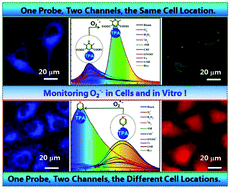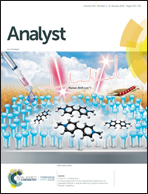Two aggregation-induced emission (AIE)-active reaction-type probes: for real-time detecting and imaging of superoxide anions†
Abstract
Fluorescent probes are powerful tools for investigating reactive oxygen species (ROS) in living organisms. The overproduced “primary” ROS of superoxide anions (O2˙−) cause a chain of oxidative damage. In order to monitor O2˙− level fluctuations in living cells, we synthesized two reaction-type probes of TPA-DHP-1,2,3 and TPA-PPA-1,2,3, which were composed of an electron-rich triphenylamine (TPA) and the very active functional groups of dihydropyridine (DHP) and pyridinium (PPA). Intriguingly, DHP and PPA were able to carry out easy proton abstractions and nucleophilic reactions in the presence of O2˙−, resulting in the corresponding products with sharp wavelength shifts, and elevated fluorescence intensities. Therefore, undesirable background fluorescence interference can be reduced during the monitoring and imaging process. Meanwhile, the developed dual-channel monitoring strategy not only provides observations of the O2˙− level fluctuations, but could also be employed to image the dynamic accumulation process of probes in the different cell organelles. Therefore, the design could provide a simple, accurate and universal platform for biological applications in future research work.

- This article is part of the themed collection: In celebration of Chinese New Year 2020


 Please wait while we load your content...
Please wait while we load your content...